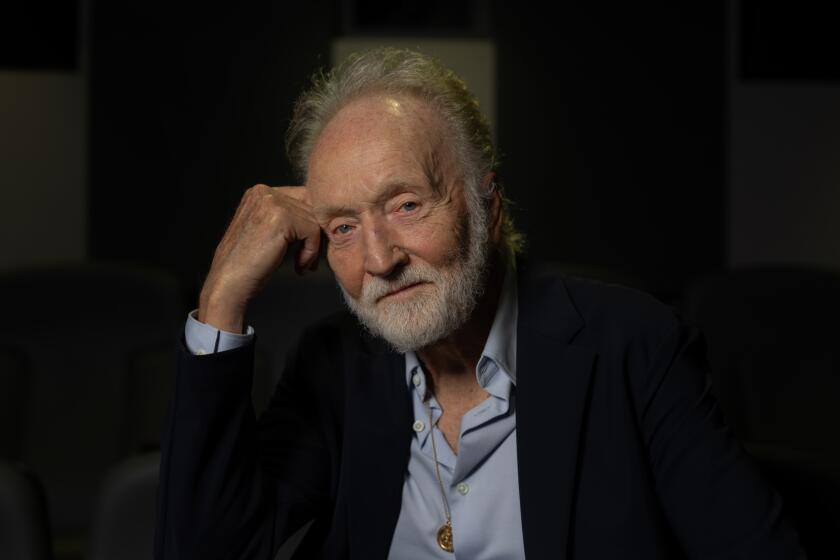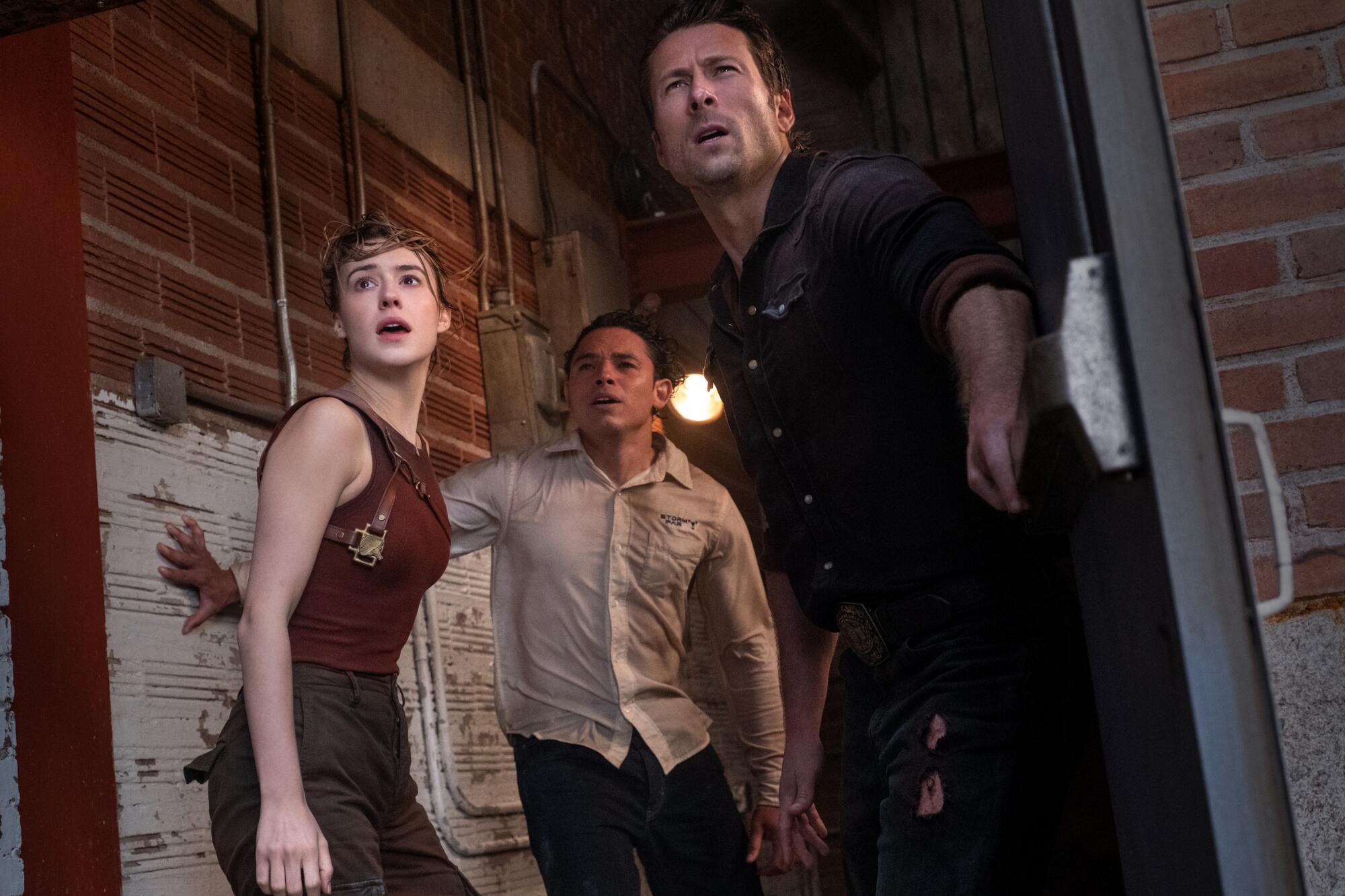
Following the success of his 2020 breakout “Minari” — an intimate, semi-autobiographical drama about a South Korean immigrant family living in 1980s Arkansas that earned six Oscar nominations — Lee Isaac Chung felt ready for a change of pace and a bigger canvas.
“I have always wished some day I could make a big action movie or a big blockbuster,” Chung says. “I wouldn’t say it was a goal — I’d say it was a dream.”
Chung’s dream was buoyed by the winds of “Minari’s” success. After proving his action chops last year by helming an episode of “The Mandalorian,” he landed the opportunity to direct “Twisters,” a standalone sequel to the 1996 disaster film “Twister.” Despite some apprehension over taking on a summer popcorn movie with a $155-million production budget that dwarfed the $2-million “Minari,” he jumped at it.
“‘Minari’ had been an emotionally taxing, heavy experience for me,” Chung says over Zoom, apologizing for any “jet-lag brain” he may have from the film’s international press tour. “I thought, ‘This is going to be a lot of fun — we’re going to be chasing tornadoes.’ It just felt like a much different ballgame.”
From the first moment he heard Lee Isaac Chung was making ‘Minari,’ Times critic Justin Chang has had a front row seat to the weirdest awards season ever.
Chung, 45, who had grown up with tornadoes as a fact of life in rural Arkansas, soon realized he had reaped the whirlwind. Filming a summer tentpole in Oklahoma’s Tornado Alley during the height of tornado season brought with it a veritable storm — onscreen and off — of logistical difficulties, with frequent delays due to unpredictable weather. Compounding the challenges, the strike of Hollywood writers and actors loomed over the shoot, halting production with 17 days to go.
“It was a very high-pressure shoot,” says Chung. “It ended up being so tiring and grueling that now I dismiss the idea that any particular film is going to be a fun shoot just because it deals with a certain topic.”

Arriving nearly 30 years after the original film, which starred Bill Paxton and Helen Hunt and grossed close to $500 million worldwide, “Twisters” follows a new generation of storm chasers, including a dedicated scientist named Kate (Daisy Edgar-Jones), who is researching ways to tame tornadoes, and a thrill-seeking cowboy named Tyler (Glen Powell), whose greatest ambition is to light them up with fireworks. The film hits theaters Friday on a wave of generally positive buzz and hopes that it can help reverse this summer’s box office slump with its mix of thrills, romance and old-fashioned blockbuster spectacle. (Universal Pictures is releasing the movie domestically while Warner Bros. Pictures is handing international distribution.)
“Twisters” climaxes with a sequence in which a massive tornado rips through a small Oklahoma town and threatens to destroy a packed movie theater — a ripe metaphor at a moment when the movies themselves face an existential threat.
The Times spoke with Chung, Powell, tornado expert Kevin Kelleher and other “Twisters” team members about how they brought this harrowing scene to life. (Warning: spoilers ahead.)
A change of venue
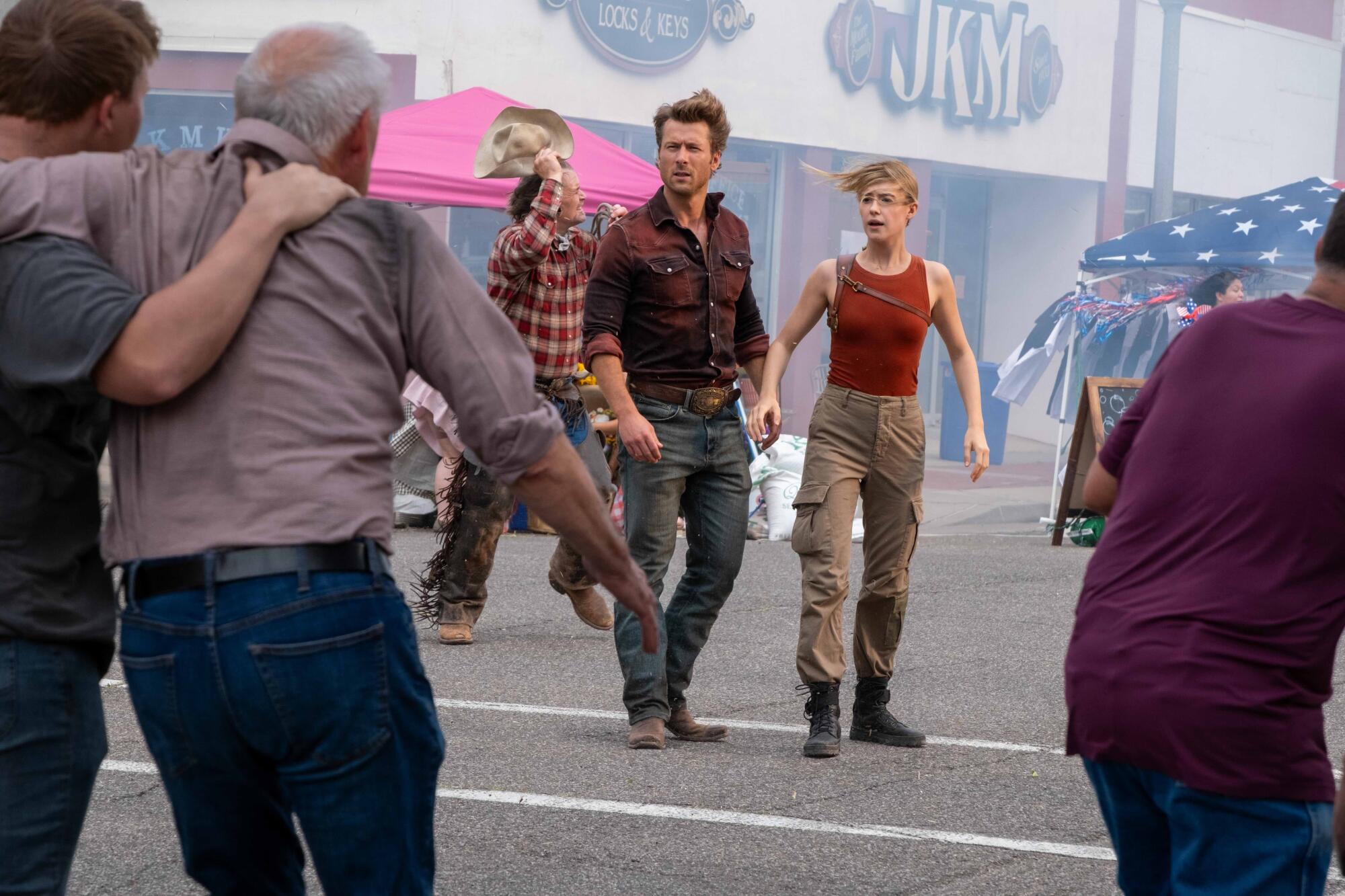
Originally, the screenplay (by “The Revenant” writer Mark L. Smith) ended with an EF-5 tornado, the most destructive categorization, bearing down on a small Oklahoma town as the central characters — Tyler, Kate and Anthony Ramos’ storm chaser Javi ‚ were scattered across several different locations trying to save people. Chung, who was still searching for the best way to tie together the film’s third act, realized that centering the finale in the town’s movie theater could be the key.
His inspiration came from a real-life incident: a tornado that struck Mayfield, Ky., in 2021, killing 24 people. A photo taken inside Mayfield’s partially destroyed movie theater proved to be the spark.
“I felt like the movie theater held the magic of the whole film in a way,” Chung says. “To me, that sequence felt like it was about what we were trying to do as a group of filmmakers — to try to bring people into a theater and blow them away in some sense.”
No actual theaters were harmed during the shoot
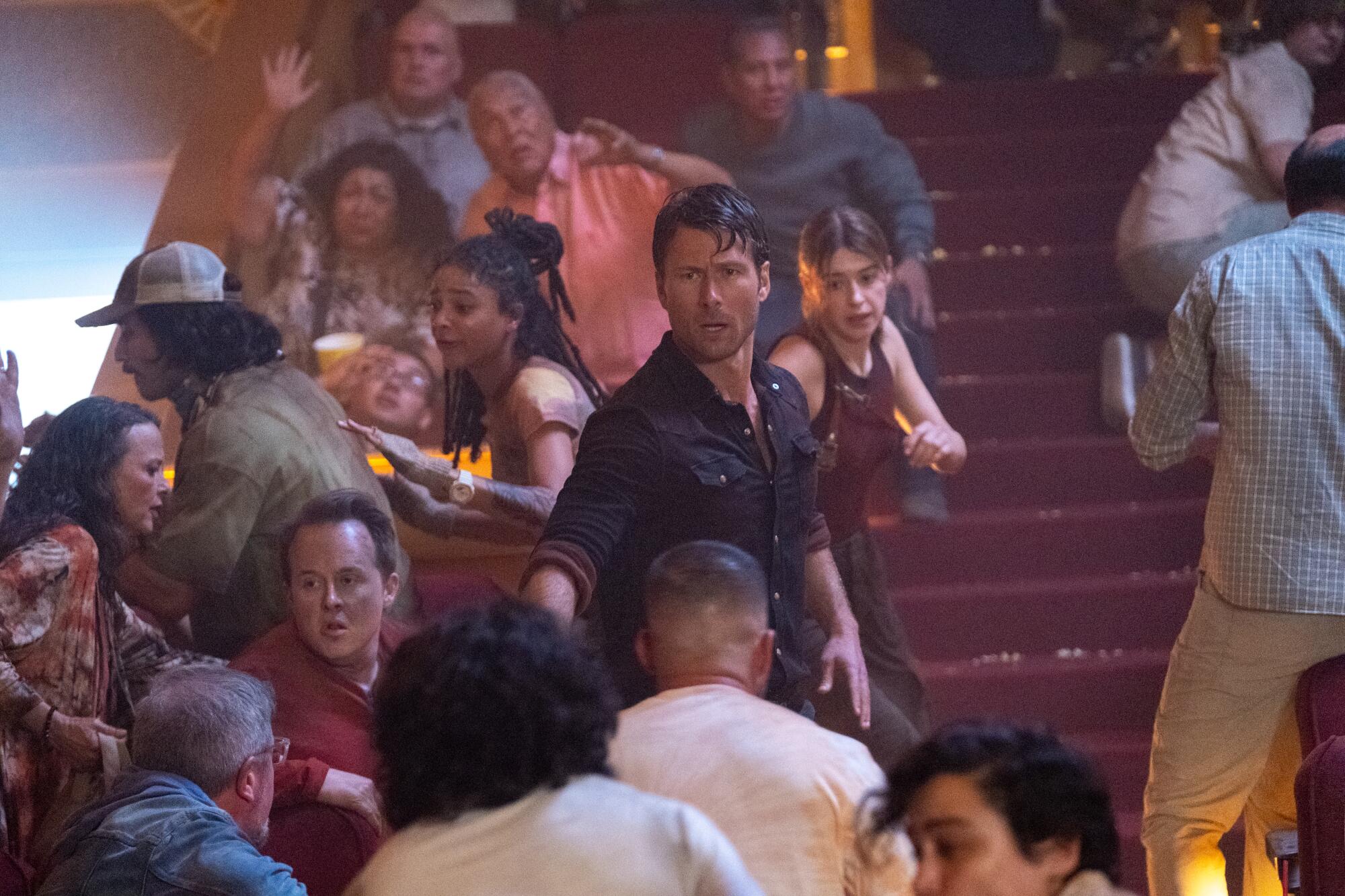
Rather than wreck an actual movie theater, the production team decided to re-create the interior of one from scratch, ensuring it could withstand the rigors of the intense action sequences required. Setting the sequence in the community of El Reno, Okla., which was hit by a powerful tornado in 2013, they used the local Centre Theatre both for the exterior shots and as a model for their build of the interior.
“We copied that design and rebuilt that theater inside of a soundstage in Oklahoma City that used to be an old basketball arena,” says Chung. The set was designed with modular walls that could be slid open and closed, allowing for the concealment of high-powered off-camera fans and other equipment needed to simulate the tornado’s devastating effects. Part of the ceiling was later added digitally, enabling the team to drop debris safely on the actors while keeping the rest of the destruction realistic.
Production designer Patrick Sullivan took care to ensure the theater felt authentic, sourcing seats from an old theater in Denver that had closed down, and constructing an ornate Art Deco movie palace simply for the purpose of destroying it.
“Patrick made a really lovely movie theater that feels retro,” Chung says. “I found it interesting that we were talking about the destruction of this theater and we were using parts of other theaters that closed down.”
Nailing the science
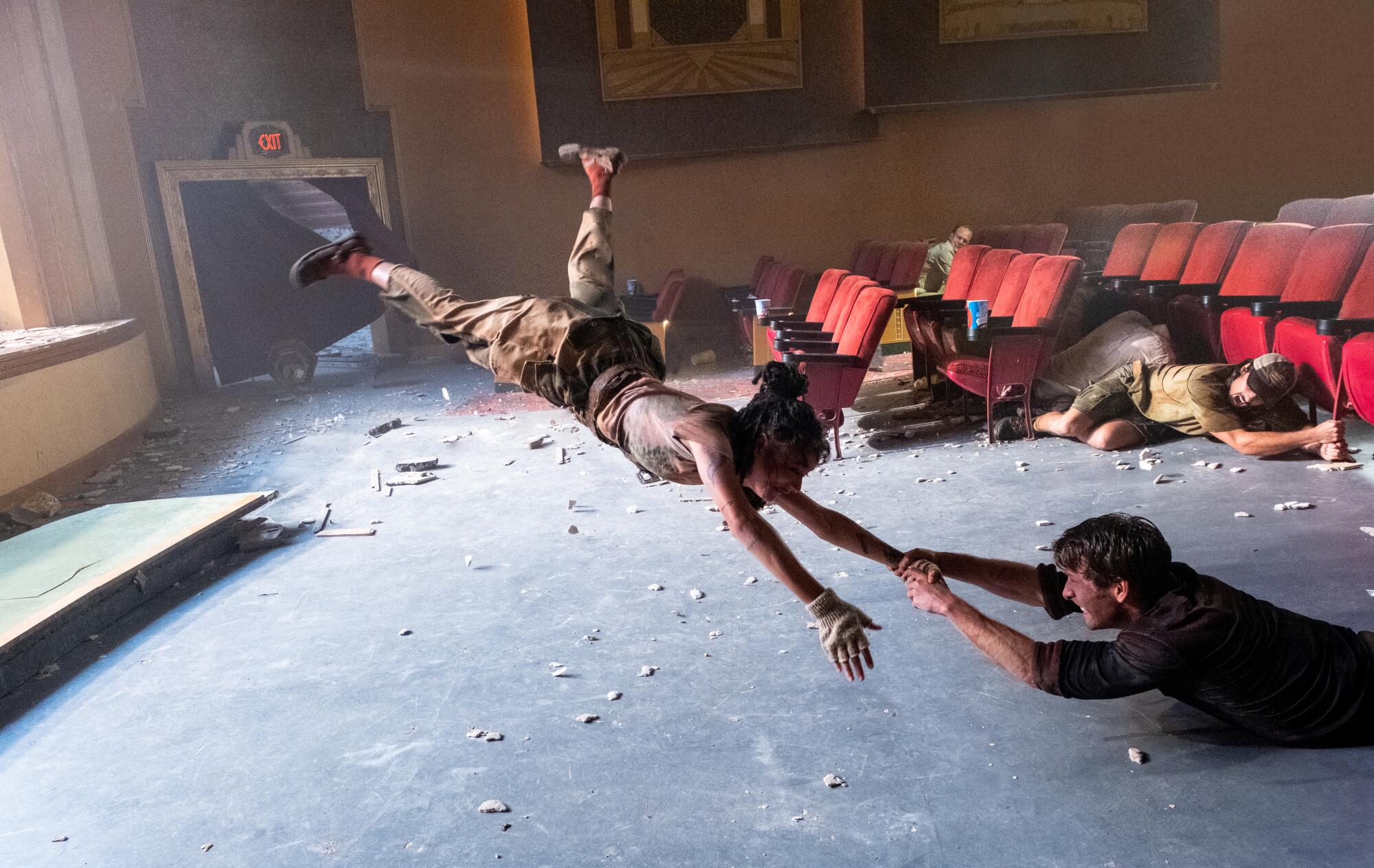
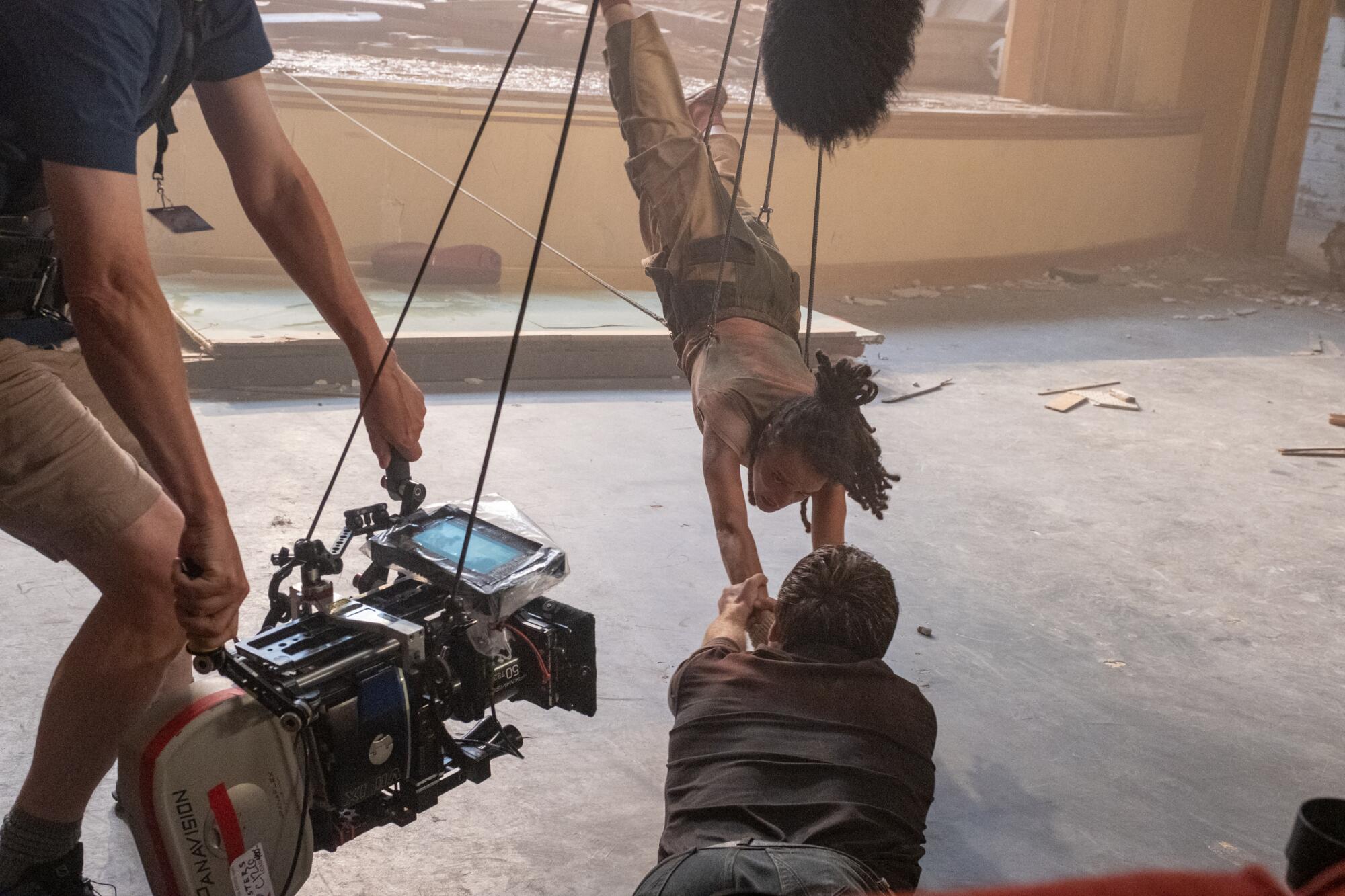
To ensure that the film balanced dramatic storytelling with scientific authenticity, Chung enlisted the expertise of tornado specialist Kevin Kelleher, a former analyst at the National Oceanic and Atmospheric Administration who had previously consulted on the original “Twister.”
“I asked Kevin to really stress-test this movie and the science that we were using,” Chung says. “Many of the details of our scientific side of the story come directly from conversations that I had with him.”
Not that there weren’t a few liberties taken, starting with the hypothetical technology the film posits that could tame a tornado using a special chemical that absorbs the moisture that serves as its fuel. “That’s a movie idea,” Kelleher says, adding with a laugh that he is “holding my breath” as he waits for the meteorological community to weigh in on “Twisters.”
“My bar I was setting for myself was to hopefully make the film as scientifically sound from a technical standpoint as possible,” he says. “But at the end of the day, there’s no research that we’re aware of that people are seriously doing to try to affect tornadoes. Not yet anyway.”
Tornadoes are rated on the five-point Enhanced Fujita scale not by wind speed but by damage, and EF-5 tornadoes are exceedingly rare, making up only roughly 1% of all tornadoes. (The last one recorded was a 2013 tornado that ravaged Moore, Okla., killing 24 people and causing $2 billion in damages.) When it comes to the kind of devastation such a tornado could wreak on a movie theater, Kelleher says the film is on solid ground.
“I think that was all fairly realistic,” Kelleher says. “Once that wall was gone and you were exposed like that, it would start pulling stuff out and then the roof and the sides would come off. If that tornado had kept coming in full force, it would have taken the theater down to the bricks and the people inside would have been gone. I didn’t think that was a stretch.”
Knowing how devastating tornadoes can be, Kelleher is quick to caution that no one should ever try to drive in the direction of one, as various characters do throughout the movie. “You really cannot drive safely into tornadoes in a truck,” Kelleher says. “They depicted it being as if they could get in and out of these tornadoes for the most part, and you really can’t. Don’t try it at home.”
Breaking the fourth wall, literally
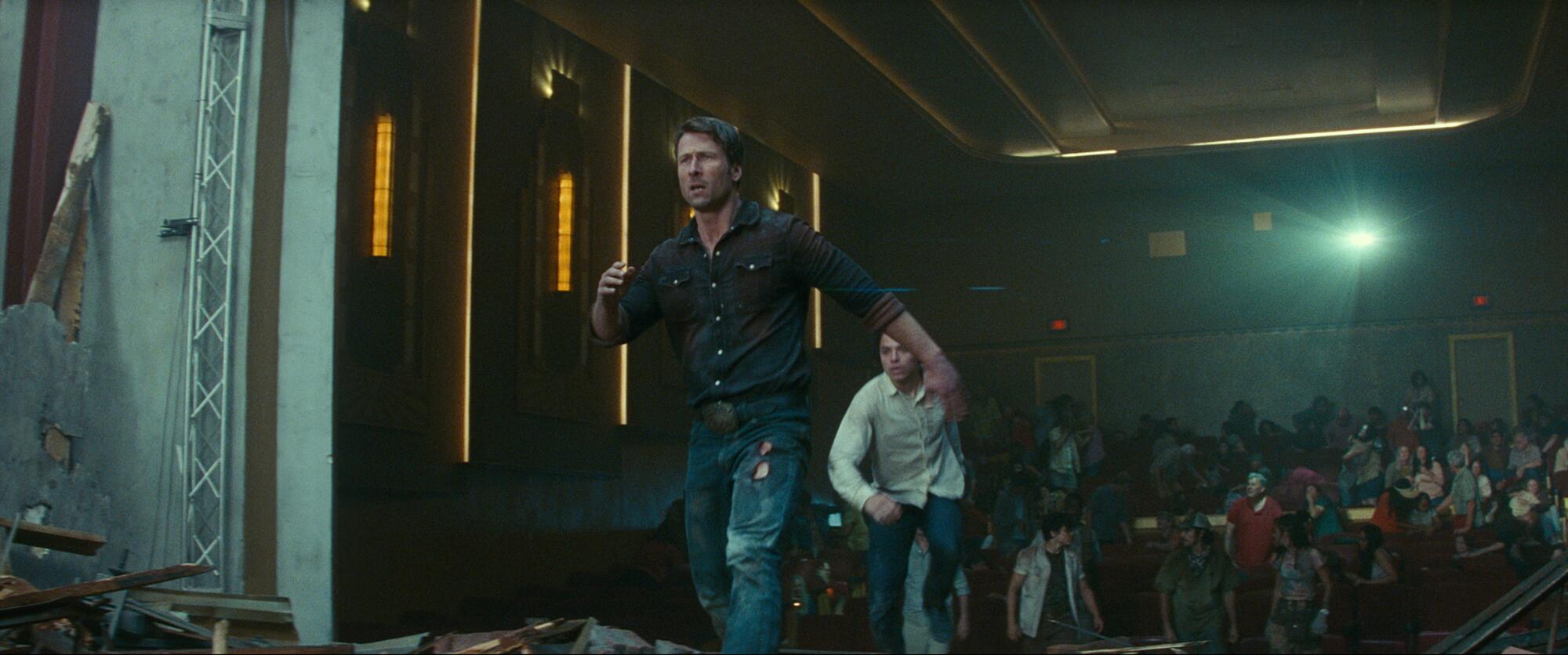
For the actors and extras, shooting the theater sequence over the course of a week proved physically arduous, involving deafening wind machines, flying debris and complex stunt choreography including wire work, as people and parts of the building are sucked up by the storm.
“There are all these elements contributing to that magic trick — wind machines, ice blowers, smoke, guys throwing leaves and buckets of water,” says co-star Powell over Zoom from London. “You’re getting pelted by pretty much every crew member with every piece of debris they can find. But, you know, tornadoes aren’t delicate and the characters are going through it, so you should go through it as well.”
As uncomfortable as the conditions may have been, Ramos felt the use of such practical effects heightened the authenticity of the performances. “The wind is hitting you, the water is hitting you, you have to yell because it’s actually loud in there,” Ramos says. “That gave us a lot to work with. If we didn’t have all that, it would be harder to fake it.”
With the set becoming progressively more destroyed with each day’s filming and the looming actors’ strike adding a sense of deadline pressure, “Nope’s” Brandon Perea, who plays a fellow storm chaser, says the stakes were high to nail each part of the sequence.
“The roof is caving in, the screen is being pulled out and you only have a certain number of times where things can fall apart because they can’t put it back together,” Perea says. “It was one of those moments where you’re looking around and you’re like, ‘Oh my goodness, I’m in a huge movie. I don’t want to waste any takes.’”
For the background extras, drawn from the local community, the notion of hunkering down to try to ride out a tornado was nothing new. “One of the first questions that our assistant director asked them was, ‘Has anyone ever been in a situation like this before?’” Chung says. “Everybody raised their hands. It was pretty wild.”
Riding out Hollywood’s storm
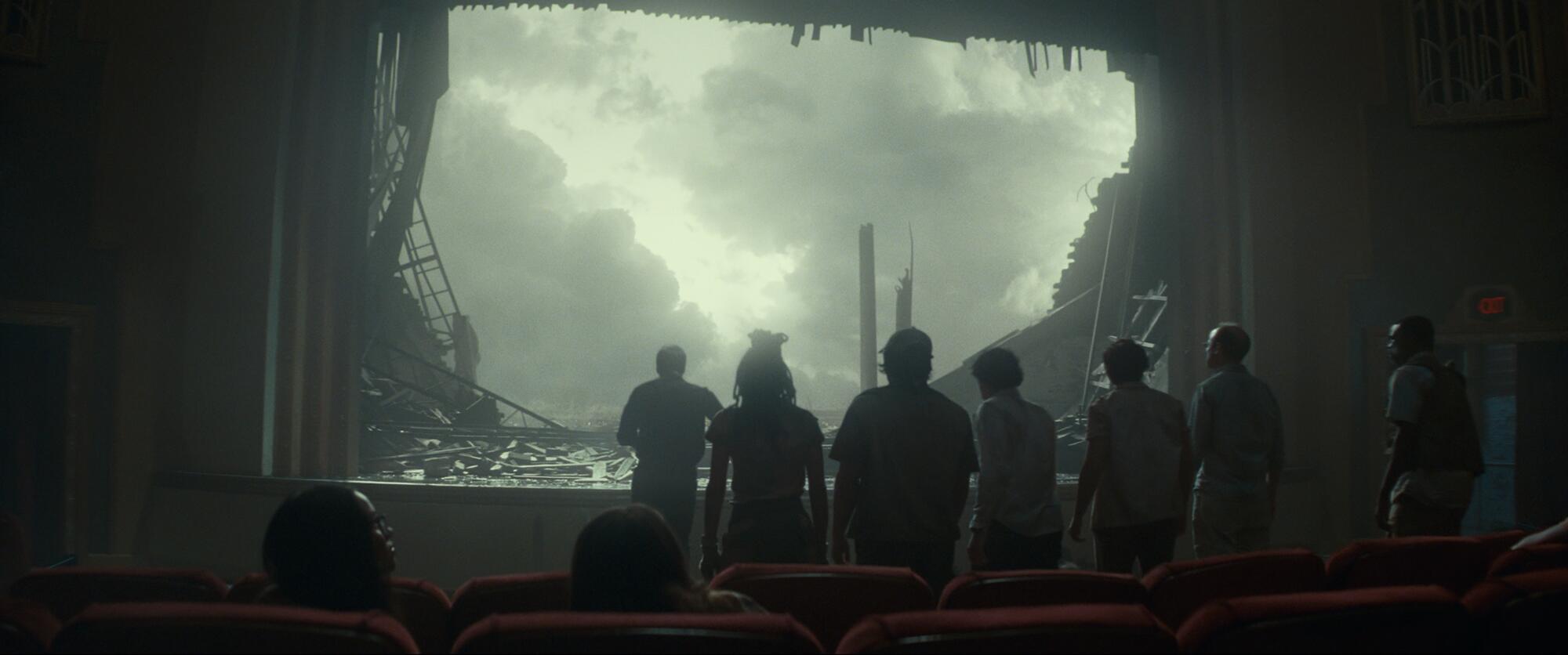
At a time when the film industry is being battered by radically shifting consumer habits and business models of the streaming era, Chung was well aware of the symbolic heft of a tornado ripping apart a movie theater. By setting his climax there, he hoped to remind audiences of the irreplaceable communal experience of watching a movie on the big screen.
“I don’t know if I’ve ever made a film where I’ve thought so much about where the industry is heading,” Chung says. “It was something that was weighing on me, knowing what kind of responsibility we have with the film to try to bring people to the theaters. We’re certainly not saying that we’re saving the cinemas in any way. But I feel like filmmakers who believe in the theatrical experience have a responsibility to try very hard to keep this medium alive and show people why it’s great to have these big communal experiences.”
For Chung, the choice of the movie playing on the Centre‘s screen when the storm hits — 1931’s classic “Frankenstein” — adds another level of meaning. As with “Twisters,” “Frankenstein” is in part about the hubris and unintended consequences of our attempts to control nature.
“‘Twisters’ is not just a disaster movie — it’s a monster movie,” says Chung. “We present these tornadoes as having a personality, and the tornado itself is a monster. Having that nod to ‘Frankenstein’ at the end is just the cherry on top.”
More to Read
Only good movies
Get the Indie Focus newsletter, Mark Olsen's weekly guide to the world of cinema.
You may occasionally receive promotional content from the Los Angeles Times.










